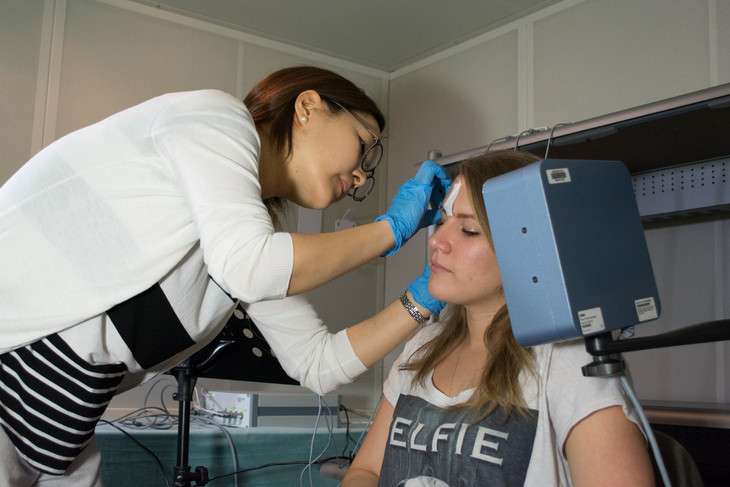Rare instrument collects speech data for dysarthria patients

In an effort to create a speech intervention program for patients with the motor speech disorder dysarthria, speech-language pathologist Jimin Lee is using a rare instrument to analyze patients' ability to move various muscles involved in speech production.
Dysarthria may produce unusually slow, unusually fast, slurred, or disrupted speech that is difficult for listeners to understand. Lee is studying patients who suffer the disorder as a secondary result of ALS and other neurological conditions.
The instrument Lee is using, a portable electromagnetic articulograph, is one of just 13 like it in the United States. Also known as the Wave system, the instrument measures the movement of the tongue, lips, jaw and other structures important in speech production using an electromagnetic field, while simultaneously recording the sounds made by the patient.
The instrument is housed in the Speech Production Laboratory in the Ford Building but is portable enough to allow Lee to take it out of the laboratory and directly to patients, including some at Penn State Milton S. Hershey Medical Center and HMS School for Children with Cerebral Palsy in Philadelphia.
Using the instrument involves attaching sensors to a patient's tongue to trace its movement during speech production. Patients are asked to read a specific set of words and sentences. The tool is attached to a microphone and a computer, which stores the data.
Lee compares tongue movement data from disarthria patients with data from people who do not have speech disorders. Additionally, she plays audio recordings of patients' speech for third-party listeners who then rate how understandable the speech is.
"The ultimate goal is to identify movement to improve patients' speech intelligibility or the amount of words others can understand," Lee said. "In patients with ALS, for example, 95 percent lose their speech. We are trying to find a way to enhance their speech intelligibility by looking at tongue movement characteristics."
The research is ongoing. Once sufficient data is collected, Lee will analyze the findings. Ultimately, she hopes the data will lead to better programs to improve patients' speech.
"Hopefully, we can strengthen our clinical intervention by providing more evidence and concrete foundation for maximized outcomes for people with dysarthria," Lee said.


















